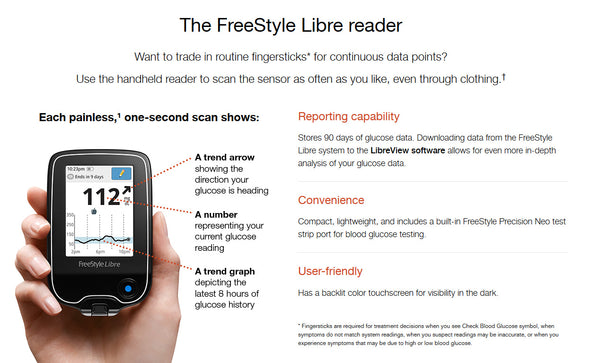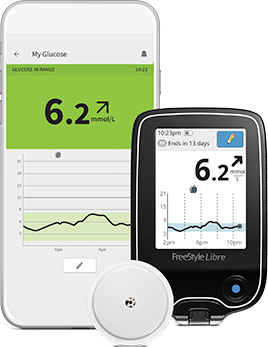

The Dexcom G6 and G7 are currently FDA cleared for adults and children as young as 2 years old. Let’s review a few notable differences between devices. All five also allow you to view your data with a helpful graph on the reader, so you can see glucose trends throughout the day.īut all CGM devices differ based on how glucose readings are sent to the receiver, if they provide alerts for high or low sugar levels, and how often they need to be replaced. Each model has water-resistant sensors and transmitters, meaning you can swim and shower while wearing them.

You don’t need to calibrate (reset) any of these CGMs before using them. Abbott makes the FreeStyle Libre 14 Day, FreeStyle Libre 2, and FreeStyle Libre 3 systems. What are the differences between Dexcom and FreeStyle Libre?ĭexcom and Abbott are the manufacturers of two very well-known CGM devices. So even if your CGM isn’t alerting you of changes, always double-check your blood sugar with a glucometer if you’re having symptoms of high or low blood sugar. But it’s important to know that a CGM can have a “lag time.” This means that it can take a bit of time for the glucose level in your tissues to catch up with the glucose levels in your blood. CGMs offer an extra layer of safety by letting you know if you’re out of target range or if your glucose is getting low or high.Ī CGM can be used along with, or instead of, a glucometer. The alert may be a noise (like a beep) or a vibration. If this function is available, your reader, phone, or insulin pump will alert you. It’s important to know that not all devices have this alert system. Some CGMs can alert you if your sugar is too high or too low.

What happens if my blood sugar is out of range? CGM trending (arrows and graphs) can be very helpful with decision making. You can choose how you would like to view your glucose data.

The receiver may be a small touchscreen reader, an app on your smartphone, or a compatible insulin pump. Readings from the sensor are sent wirelessly to a receiver that displays your glucose levels. Instead, it monitors the amount of glucose in the fluid just beneath the skin. Unlike a glucometer, a CGM doesn’t tell you what your blood glucose is. Where you insert the sensor and how long you can wear it may be different for each device.
#Abbotts freestyle libre flash glucose monitoring system skin#
The sensor uses a painless microneedle under the skin to detect glucose levels. Each monitor comes with a wearable sensor. How do continuous glucose monitors work?ĬGMs work by regularly tracking your glucose levels. They all work differently but have similar functions. This will give them the information they need to adjust your diabetes treatment plan. You can share CGM data with your diabetes care team at any time - even between appointments. These results will help you to make safe decisions about medication, foods, and exercise. It’s important to know what your glucose is, especially if you take insulin. This can help you to predict and detect lows and highs, and track glucose trends over time. With real-time continuous results, CGMs provide hundreds of results every day. They take glucose monitoring a step further than using a glucometer. View more medications What is a continuous glucose monitor (CGM)?ĬGMs are wearable devices that track changes in glucose 24 hours a day.


 0 kommentar(er)
0 kommentar(er)
